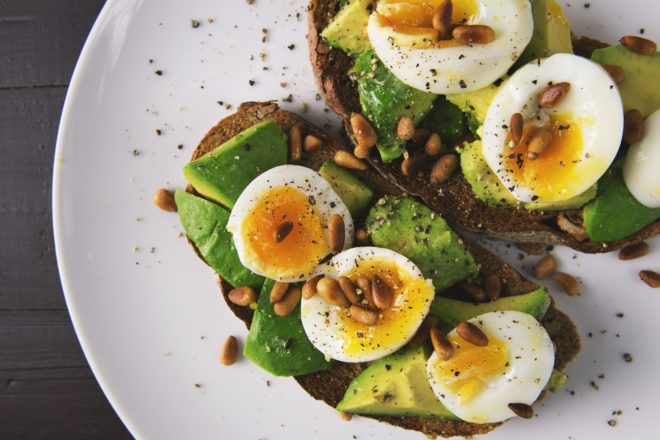
Clinic News
Happy New Year to you all - OK, So how many have made those dreaded New Year's resolutions?? Instead ...how about setting realistic goals for yourself rather than resolutions - think about a few things you would like to achieve in 2024 and work towards achieving them rather than punishing yourself if you fail with your half-hearted resolution. It could be working towards running 5k or a marathon, going for a walk at lunchtime every day, starting a new hobby, or better still picking up an old one. It could be making a date with an old friend or family member who you haven't seen for a while. "Most of all fill your year with magic, dreams and good madness" neil gaiman
We welcome Sophie Merritt-Drew to the team, who has thrown herself seamlessly into Luke's shoes after completing his PRT programme, he goes off to support his dad's clinic in Derby. We wish him success in his new venture. Sophie will start the PRT training programme now with Alex mentoring her over the next year. Her special interest lies in sport and as an internationally recognised shot putter and discus thrower, has had first-hand experience as to how chiropractic care can support you during training and competitions.
As Erin takes a well-earned break and flies home to Malaysia for some family time next month, we will be initiating the 'buddy system'. What is this you ask? This is where we ensure you have support when your designated chiropractor is away on holiday, fully booked or unavailable when you need it. So over the next few weeks, your treatment session may well have another chiropractor in with you observing your session. This will help us all get up to speed on your care and support you when you need it.
The team will be venturing off to the Royal College of Chiropractors winter conference on Wednesday 31st January and will be in receipt of the 2024-22026 PPQM ( patient participation quality mark) award - look out next month for some exciting photos.
Check out the articles this month on the top 5 back exercises, healthy eating and core stability.

Top 5 Exercises to Help with Back Pain
Back pain is the second most common reason to visit the GP, with almost eight out of 10 of us experiencing it at least once in our lives. It’s also the number one cause of sick leave – and sufferers are getting younger. Chronic back pain has been called a modern epidemic – so how do we help prevent and manage it?
It rarely has a serious cause, usually being brought on by bad posture, awkward sleeping positions, and other lifestyle habits. Exercise is one of the best ways to help reduce back pain and keep it from returning.
Stretching, strengthening, and conditioning exercises can result in stronger muscles that support the spine and your body’s weight. When your skeleton is supported, you are less likely to suffer injury and back pain. Take a look below for five useful exercises to beat back pain:
Pelvic Tilt
You need to take care of the core muscles that support your spine. There are many workouts for back pain that do this, and your doctor or therapist should be able to give you specific advice and training for your unique back pain condition.
A good example of a safe strengthening exercise is the pelvic tilt. To do this exercise, lie on your back with your knees bent. Tighten your stomach muscles until you can press the small of your back flat against the floor. Hold the press for about five seconds and repeat up to 10 times.
Stretches
Keeping your core muscles limber is as important as keeping them strong. Two good stretching exercises are the knee-to-chest and the hamstring stretch.
To do the knee-to-chest, lie on your back with your knees bent and feet flat on the floor. Bring one knee up to your chest and use your hands to pull the knee close while flattening out your back; then repeat with the other knee. The hamstring stretch is done from the same starting position. Pick up one leg with both hands placed behind your knee and then straighten your lower leg. These stretches should be held for about 20 seconds and repeated five times. Be sure to warm up before you stretch.
Stretches to avoid: one of the worst stretches for a person with back pain is bending over to touch your toes while keeping your legs straight. Even worse is bouncing while trying to touch your toes. Other bad workouts for back pain are ones that require you to bend or twist with any type of weight in your hand.
Water Workout
An aerobic exercise is any exercise that uses the big muscles of your body in a rhythmic and repetitive way. Aerobic exercise can get the blood flowing to your back muscles, which can really help them recover from injury and increase their strength. Walking is a good low-impact aerobics choice for your back, but swimming may be an even better workout for back pain if you get backaches.
In general, swimming is an excellent form of low-impact aerobic conditioning that is easy on the back and spine, with swimming there is practically no impact on the spinal structures. The water supports the body, relieving stress on all joints in the body.
Yoga and Pilates
Three all-around good workouts for back pain are Yoga, Pilates and working with an exercise ball. Yoga and Pilates are great because, as long as your teacher knows your limitations, they can be adapted safely for most people with back pain.
Yoga and Pilates are both fantastic mind-body workouts that can dramatically improve your overall fitness and wellbeing if regular practice is put into place. In terms of flexibility, both workouts can improve overall flexibility as well as increase spinal flexibility. Increasing spinal flexibility will really help to improve your fitness performance, in addition to helping prevent injuries.
Pilates focuses on spinal flexibility through the articulation of the spine. It is excellent as a strengthening exercise and supporting your back. Pilates and Yoga stretch benefits include improving your posture, helping support the spinal column, and alleviating back pain. However certain postures such as deep back bends and cobras can be a bit risky, especially if you suffer from any back pain.

Staying Healthy, Safe and Fit During Winter
With shorter days and colder weather, finding the motivation to stay healthy and fit can be difficult. And that can lay the foundation for a weakened immune system, posing a greater risk of developing illness or injury. No wonder they call it the winter blues! Here are some easy tips on exercise, diet, health and wellness that you can follow during the cold season.
Start a Keto diet
The ketogenic diet (or keto diet, for short) is a low-carb, high-fat diet that offers many health benefits. In fact, over 20 studies[1] show that this type of diet can help you lose weight and improve your health. It involves drastically reducing carbohydrate intake and replacing it with fat. This reduction in carbs puts your body into a metabolic state called ketosis.
When this happens, your body becomes incredibly efficient at burning fat for energy. It also turns fat into ketones in the liver, which can supply energy for the brain. Ketogenic diets can cause massive reductions in blood sugar and insulin levels. This, along with the increased ketones, has numerous health benefits. Ketogenic diets may even have benefits against diabetes, cancer, epilepsy and Alzheimer’s disease.
Add Omega 3 fatty acids
Omega 3 fatty acids are a healthy type of fat that are naturally found in many food types including fish, plant seeds and nuts. Omega 3 fatty acids are great for reducing joint pain and stiffness as they are a natural anti-inflammatory”. Studies[2] have also shown that omega 3 fatty acids help lower levels of depression, which people commonly feel during the shorter, darker days of winter.
Cook with Spices and Spice Related Foods
Onions, garlic, ginger and turmeric are the perfect items to add flavour to your dishes. Not only do they make food taste great, but they’re also shown to help improve immune function. Fresh garlic, ginger and onions are more than flavouring. Using all three together has a synergistic effect on lowering cholesterol and blood pressure. Turmeric is a spice traditionally used in Chinese and Indian medicine. This spice helps to combat a number of conditions including inflammation and heart disease, and it also acts as a powerful antioxidant.
Plan your Workouts
If you don’t feel in the mood for fitness, you can do exercises at home. There are plenty of resources online that supply workout videos and exercises. These resources offer a variety of workouts including yoga, strength training, aerobics and other body-weight exercises. But try to stick to a weekly exercise plan so you don’t put off your regular exercise activities. On Sunday night, write down your exercise schedule for the next seven days. Choose your exact workout routines, activities or exercises for each day and how long they will be. Knowing what you’re scheduled to do each day ahead of time makes it easier to stick to.
Head to a Steam Room or a Sauna
If you begin to feel yourself experiencing depression or higher levels of stress after the holiday season, steam rooms and saunas can help. They help tense muscles to relax, which can alleviate feelings of stress. The high temperatures also get you working up a sweat, which is a great way to detoxify your body and your skin.
Frequent Hand Washing and Vitamin C
Frequent hand washing throughout the day and consuming lots of vitamin C are an absolute must in maintaining your health during the winter.
Not only do they help protect your immune system and prevent you from developing flu and colds, they also protect others around you.

Core Stability Helps Prevent Back Pain
If you’re following the trends in exercise and fitness, you’ve probably heard the phrase “core strength” or “core stability.” These terms refer to the muscles of your abdominals (stomach) and back and their ability to support your spine and keep your body stable and balanced, helping to prevent back pain.
The core muscles lie deep within the trunk of the body. They generally attach to the spine, pelvis and muscles that support the scapula. They stabilise these areas to create a firm foundation for co-ordinated movement of the legs and arms.
Core stability is also needed in everyday life, helping to keep you fit and to prevent injury when you are lugging those heavy shopping bags or doing the ironing. Rises in back pain incidence have been linked to the sedentary lifestyle that many of us lead. How about neck and shoulder pain? Time spent hunched over the desk instead of getting out and about can mean that we don’t pay enough attention to posture, and the muscles of those crucial “corset” muscles.
To strengthen your core stability:
- Start by lying on your back with knees bent.
- Your lumbar spine should be neither arched up nor flattened against the floor, but aligned normally with a small gap between the floor and your lower back. This is the “neutral” lumbar position you should learn to achieve.
- Breathe in deeply and relax all your stomach muscles.
- Breathe out and, as you do so, draw your lower abdomen inwards as if your belly button is going back towards the floor.
- Hold the contraction for 10 seconds and stay relaxed, allowing yourself to breathe in and out as you hold the tension in your lower stomach area.
- Repeat 5-10 times.
Bear in mind the following points:
- Do not let the whole stomach tense up or your upper abdominals bulge outwards, as this means you have cheated by using the large rectus abdominus muscle (the six-pack).
- Do not brace too hard; just a gentle contraction is enough. Remember it’s endurance not max strength your are trying to improve.
- Do not tilt your pelvis nor flatten your back, as this means you have lost the neutral position you are trying to learn to stabilise
- Do not hold your breath, as this means you are not relaxed. You must learn to breathe normally and maintain the co-contraction.
- Use your fingers for biofeedback on either side of your lower abdomen to feel the tension.
Once you have mastered the abdominal hollowing lying on your back, practise it lying on your front, four-point kneeling, sitting and standing. In each position get your lumbar spine into neutral before you perform the hollowing movement. If you feel any pain or discomfort while doing these exercises, then stop immediately and seek medical advice before continuing.
We treat all conditions that affect any muscle or joint in your body, from your head to your little toe! One of the most common complaints that we treat is back pain and Chiropractic is recommended by the government authority, the National Institute for Clinical Excellence (NICE) for acute and chronic back pain. Some of the other conditions that we treat are neck and headache, shoulder pain, leg and hip pain, knee and foot pain, sciatica and arthritis. Our registered Chiropractors all have at least five years of training. Treatment costs can be covered through most health insurers. If you are in any doubt, we are always very happy to talk with you on the phone to see if your condition will respond well to Chiropractic treatment. Call the clinic now to arrange an appointment time that works for you. 0115 9225085 If you would like to opt-out of receiving these newsletters please follow the unsubscribe link below, email alex@beestonchiropractic.co.uk or let us know at your next appointment.




